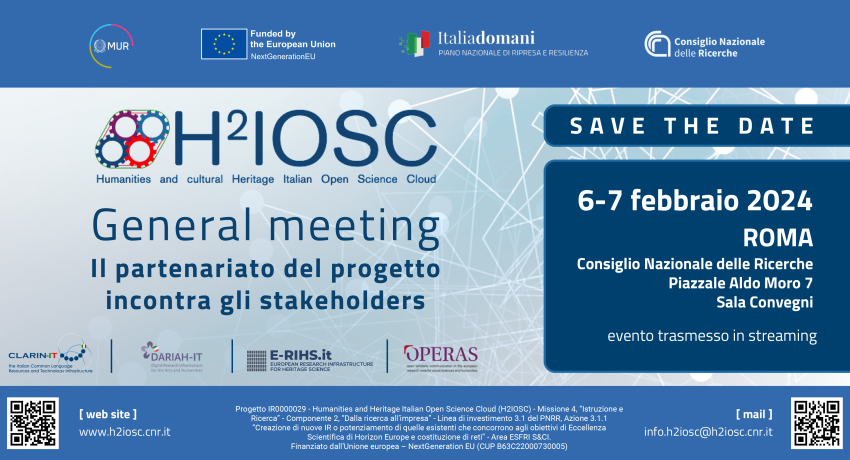
Seminario del Prof. Shi Jin
Il prossimo 24 gennaio, al CNR IAC (aula seminari, I piano) si terrà il seminario del Prof. Shi Jin della Shanghai Jiao Tong University, dal titolo Dimension Lifting for Quantum Computation of partial differential equations and related problems.
Di seguito l'abstract.
General Meeting del progetto H2IOSC
Si tiene a Roma il 6 e 7 febbraio, presso la sala convegni del CNR, il prossimo General Meeting di H2IOSC, il progetto PNRR che mira a permettere a ricercatori di diverse discipline umanistiche, tecnologiche e dei beni culturali, di interagire e collaborare attraverso lo scambio di dati, conoscenze e strumenti di calcolo computazionale.
L'evento è trasmesso in streaming al link indicato in calce.
- Read more about General Meeting del progetto H2IOSC
- Log in or register to post comments
3° Seminario Volterra
On the Smoluchowski equation for aggregation phenomena under non-equilibrium conditions
Alessia Nota, Università dell'Aquila







